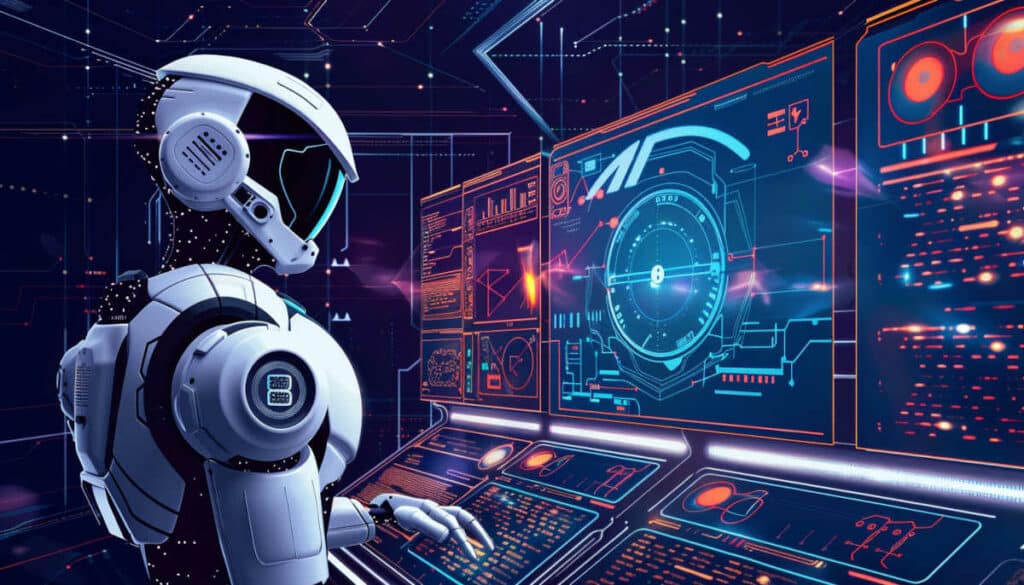The AI cybersecurity market is anticipated to swell from 1 billion dollars to 34.8 billion dollars by 2025. With hackers becoming more sophisticated, the exponential growth of data, and the ever-expanding attack surfaces, computer security professionals must leverage every available tool to safeguard data. Artificial Intelligence stands as one of these pivotal tools. Yet, this technology, while immensely beneficial in warding off cyber threats, is not without its risks.
6 benefits of using AI and cybersecurity
With its capability to process vast volumes of data at unparalleled speeds, AI emerges as an essential ally in cyberdefense. Below are its key advantages.
1 - Human Error
Although to err is human, errors can sometimes lead to severe repercussions in cybersecurity. Moreover, the likelihood of errors increases in situations involving the replacement, modification, or updating of network systems, thereby giving malicious hackers a free hand.
AI specifically aims to reduce the risks of cybersecurity breaches. It achieves this by eliminating the need for IT teams to handle tedious manual processes. Instead, artificial intelligence automates these processes. When properly trained, AI models can even assist in detecting errors.
The deployment of AI in cybersecurity becomes even more crucial when considering that human error is the most common cause of hacking incidents.
2 - Recurring Tasks
To set up an efficient cybersecurity management system, performing numerous tasks, especially those related to network configuration, is essential. Yet, these vital tasks are notoriously time-consuming. Cybersecurity experts might spend hours configuring the network instead of concentrating on vulnerability analysis.
Luckily, AI is capable of assuming these repetitive tasks and automating them.

Relieved from the burden of manual tasks, IT professionals can stay abreast of technological advancements to remain informed about the latest cyber practices, be more vigilant in threat detection, and respond in real-time.
3 - Threat Detection
AI’s formidable strength in cybersecurity lies in its ability to process vast amounts of data incessantly. It can identify new vulnerabilities, risks, abnormal or unusual activities at any given moment.
Crucially, machine learning algorithms are intelligent. With each new threat encountered, they learn its modus operandi, the appropriate responses, its processing time, and more.
4 - Response Time
In cyber attacks, a pivotal success factor for hackers is the speed of incident response. The longer IT specialists take to react to attacks, the more leeway hackers have to penetrate the computer system, at times causing irreversible damage. Ransomware like LockBit can breach a network in just 30 minutes.
To thwart attacks promptly, cybersecurity professionals must be able to detect them swiftly. The challenge lies in the sheer volume of data they need to handle. This is where AI steps in. It enables them to manage the deluge of information by processing available data significantly faster than humans. In mere minutes, ML models can extract data related to an attack, process it, analyze it, and compile simplified reports. What remains is to make the optimal decision on how to counter the threat.
Good to Know: Remember, while AI is a valuable tool in cybersecurity, it does not substitute the expertise of a CISO. It enhances their technical skills, highlighting the importance of ongoing training in computer security.
5 - Decision Making

Every day, cybersecurity professionals are tasked with making critical decisions that significantly impact their organizations. This can lead to decision fatigue. Owing to limited resources, many prioritize urgent and significant decisions, overlooking smaller vulnerabilities that hackers might exploit. To comprehensively address these vulnerabilities, they can apply AI in cybersecurity, for example, through automated labeling and grouping to streamline the management of threats or even entrusting certain threat responses directly to algorithms.
6 - Data Management
Artificial Intelligence plays a role in managing personal data, especially within the context of the GDPR. For instance, algorithms can perform a mapping of collected data, pinpoint the most relevant data, and secure data with a personal nature (notably through anonymization).
However, given the sensitivity of data protection, it is critical to evaluate the suitability of AI in this area. Is it reliable enough?
Risks That Cannot Be Overlooked
While cybersecurity experts are increasingly incorporating AI into their strategies, they are not the sole ones exploiting its potential. Malicious hackers also understand how to leverage AI’s capabilities.
They enhance their attack techniques, using AI for tasks like impersonation, spear phishing, target selection, or persona creation.
Furthermore, generative AI finds widespread use in refining phishing scams. Hackers can automatically generate false information (a customized site, an official-looking email utilizing personal information, etc.) to ensnare their targets. These include the notorious deepfakes, which are becoming ever more sophisticated and harmful.
The challenge for cybersecurity experts is to not be outpaced by hackers and to always stay informed about new attacks and the techniques employed.











